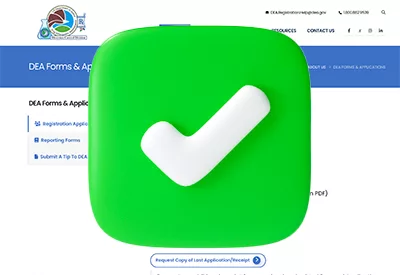Psychological Dynamics in Psychopharmacology with Steven Reidbord, MD

Learning Objectives
After the webinar, you should be able to:
-
Identify psychodynamic factors, including transference and countertransference, that influence psychopharmacological treatment outcomes.
-
Recognize unconscious patient behaviors such as resistance, splitting, and medication symbolism that may affect adherence or treatment response.
-
Apply techniques to manage complex dynamics in the prescriber-patient relationship, including those found in split treatment or difficult interpersonal encounters.
-
Differentiate between placebo and nocebo effects and utilize this knowledge to improve medication efficacy in clinical practice.
-
Integrate brief psychodynamic exploration into medication visits to improve therapeutic alliance and patient insight.
-
Interpret patient behavior and requests that may have symbolic or unconscious significance, and use collaborative approaches to support treatment goals.
Transcript
Transcript edited for clarity.
Hi, I’m Dr. Steven Reiboard, a board-certified psychiatrist and psychiatric educator. I’m here to give you a 30-minute overview of the psychological and psychodynamic factors that can impact the psychopharmacological treatment of patients. We’ll review conscious and unconscious dynamics and highlight how these may show up as practical concerns.
In a medication clinic, prescribers know they need a positive clinician-patient relationship for effective care. When patients feel like you’re on the same team, all pulling in the same direction—not at odds with each other—they’re more likely to be partners in their own healthcare: to accept your advice, follow your treatment plan, be honest with you, and follow up faithfully.
Most prescribers think about this at the conscious level. Does the patient trust me? How do they feel about mental health professionals in general? Did they have a bad experience with their last provider? These are important things to consider. But there’s another, less conscious level to the prescriber-patient relationship. At this level, patients can unwittingly enhance or undermine their own care. They can render your treatments ineffective and even end up irritating you. That’s our focus today.
If we spend our days prescribing, seeing patient after patient, we may lose sight of how emotionally significant it is for a given patient to receive a prescription. Receiving a prescription—even before they take it—may change how they feel about themselves, about you, and about the medical system in general.
The feelings a patient has about a particular prescription result from a number of factors: their own past experiences with the medication, information from family and friends, anecdotes they’ve heard, things they’ve read online, or even results from their own research. As you know, there’s a great deal in the media and popular culture about psychiatric medications. This shapes how patients feel about them—positively or negatively. So far, we’ve discussed conscious feelings about prescriptions, but there’s also symbolic meaning at an unconscious level.
What does it mean emotionally that you’ve advised the patient to take this medication? From our perspective as prescribers, we do it out of beneficence—we want to help. Many patients see it that way too, at least in part. But people are complicated. They may feel relief, hope, and gratitude that someone can help them feel better, while also feeling damaged, labeled, or diminished—that they can’t handle this on their own. There are moral overtones in our culture about taking psychiatric medications. The message often is that adults should “pull themselves together” without outside help. A patient may therefore feel broken, inadequate, or like a failure for needing medication.
This brings us to transference—a term from Freud referring to the feelings a patient projects onto their clinician. Transference doesn’t only occur in psychotherapy; it’s part of all human relationships, including medication visits. We can think of the prescriber-patient encounter in psychodynamic terms: What assumptions or expectations is the patient bringing? What role are they unconsciously assigning you?
A few examples:
-
They may view you as an authority figure or expert and defer to your advice completely.
-
They may see you as a savior—their last hope, someone who arrived just in time.
-
Conversely, they may view you as competition, challenging your expertise or seeking to “outsmart” you.
-
They may see you as inadequate (“You’re only a resident,” or “You’re not a physician”), which can be irritating or unfair but still affect the dynamic.
-
Or they may become overly dependent, checking in with you about every small decision.
These reactions are based on personality and emotional history. Anxiety and stress can amplify transference.
There’s also countertransference—the feelings you have toward the patient in response to their behavior and emotions. It’s important to distinguish general feelings from those evoked specifically by the patient. These can take many forms: feeling competent and valued when the patient treats you as an expert, or irritated and undermined when they challenge you. You might find yourself looking forward to some patients and dreading others. That’s normal and human. The key is awareness—recognizing these feelings so they don’t unconsciously shape your behavior.
Even brief medication appointments can be seen as transference-countertransference enactments, where each person’s feelings influence the interaction. The more conscious you are of this dynamic, the better you can manage it.
The medication itself can act as a transitional object—a concept from psychoanalysis. The pill bottle symbolically represents you, the prescriber. When patients take the medication, it’s as though they’re “taking you home” or even “internalizing” you symbolically. This may affect how they feel about the medication, since those feelings are, at some level, feelings about you.
Practical Implications
Placebo Effect: In clinical practice, the placebo effect is our friend. We want patients to feel better, whether the improvement stems from pharmacology or psychology. Hope, trust, and positive expectations all enhance outcomes.
Nocebo Effect: The opposite can occur when psychological factors interfere—patients feel worse or can’t tolerate medications for unconscious reasons. Minor side effects may be magnified depending on how patients interpret them.
Unconscious Resistance: Patients may forget doses or appointments, or report intolerable effects, not intentionally but due to unconscious resistance. Others may become overly attached to medications, fearing discontinuation even when appropriate.
Splitting: Some patients idealize or demonize medications (“this will save me” vs. “this is poison”). These polarized views reflect underlying personality dynamics.
Applying Psychodynamics in Practice
Recognize unconscious communications—like forgetting doses—as potentially meaningful. Address medication-related transference directly: “You seem hesitant about my recommendation. Let’s talk about that.” Discuss what the prescription symbolizes for them. In split-treatment cases (one clinician for therapy, another for medication), communication between providers is key to avoid “splitting” dynamics.
Collaborative decision-making should be tailored to the patient’s transference pattern. Speak clearly and concretely. Empathize with ambivalence, and don’t pretend to have certainty where there is none—patients can sense false confidence.
Clinical Vignettes
1. James (42-year-old executive): Idealizes medication as a magical fix to avoid emotional work after a divorce. Prescriber frames medication as a helpful tool, not a cure-all.
2. Maria (35-year-old teacher): Experiences intolerable side effects at subtherapeutic doses—reflecting unconscious resistance and fear of loss of control. Prescriber explores meaning before prescribing again.
3. Samuel (50-year-old): Passively rejects all suggestions, evoking frustration in the prescriber. Recognizing countertransference prevents reactive prescribing and encourages collaboration.
4. Eleanor (68-year-old): Tearfully resists tapering a long-term antidepressant, viewing it as her only constant. The prescriber validates her attachment and emphasizes continuity of care.
5. Alex (late 20s): Tells each provider conflicting things, unconsciously recreating parental dynamics. Providers coordinate care to avoid being “split” and explore the underlying anxiety.
6. Jonathan (45-year-old accountant): Requests an unusual dose (43 mg) linked symbolically to his mother’s death at 43 days postpartum. Prescriber explores the emotional meaning rather than dismissing or complying.
Even dosage preferences can carry symbolic weight—patients may generalize from past experiences with numbers or medications, consciously or unconsciously.
Conclusion
You can improve success in prescribing by integrating psychodynamic awareness—encouraging placebo effects, minimizing nocebo effects, and recognizing both conscious and unconscious dynamics in the prescriber-patient relationship. These insights enhance both adherence and therapeutic alliance.
Thanks for watching.
References:
Benedetti, F. (2008). Placebo effects: Understanding the mechanisms in health and disease. Oxford University Press.
Freud, S. (1912). The dynamics of transference. The Standard Edition of the Complete Psychological Works of Sigmund Freud (Vol. 12, pp. 97–108).
Gabbard, G. O. (2001). A contemporary psychoanalytic model of countertransference. Journal of Clinical Psychology, 57(8), 983–991. https://doi.org/10.1002/jclp.1076
Häuser, W., Hansen, E., & Enck, P. (2012). Nocebo phenomena in medicine: Their relevance in everyday clinical practice. Deutsches Ärzteblatt International, 109(26), 459–465. https://doi.org/10.3238/arztebl.2012.0459
Kernberg, O. F. (1975). Borderline conditions and pathological narcissism. Jason Aronson.
Mintz, D. L. (2005). Psychodynamic psychopharmacology: An overview. Psychiatric Times, 22(5), 47–49.
Mintz, D. L., & Belnap, B. H. (2006). When what you hear isn’t what they said: Psychodynamic formulation in psychopharmacology. Psychiatric Clinics of North America, 29(1), 1–18. https://doi.org/10.1016/j.psc.2005.10.002
Mintz, D. L., & Flynn, D. F. (2012). The psychodynamic formulation and psychopharmacologic practice: A review and update. Harvard Review of Psychiatry, 20(6), 312–319. https://doi.org/10.3109/10673229.2012.732561
Searles, H. F. (1955). The informational value of the supervisor’s emotional experiences. Psychiatry, 18(2), 135–146.
Winnicott, D. W. (1953). Transitional objects and transitional phenomena. International Journal of Psychoanalysis, 34, 89–97.


_-The-Breakthrough-Antipsychotic-That-Could-Change-Everything.webp?t=1729528747)



